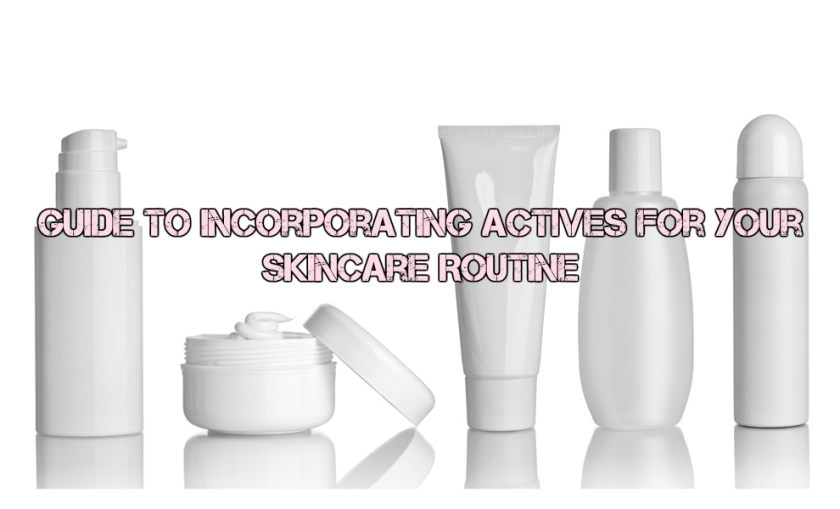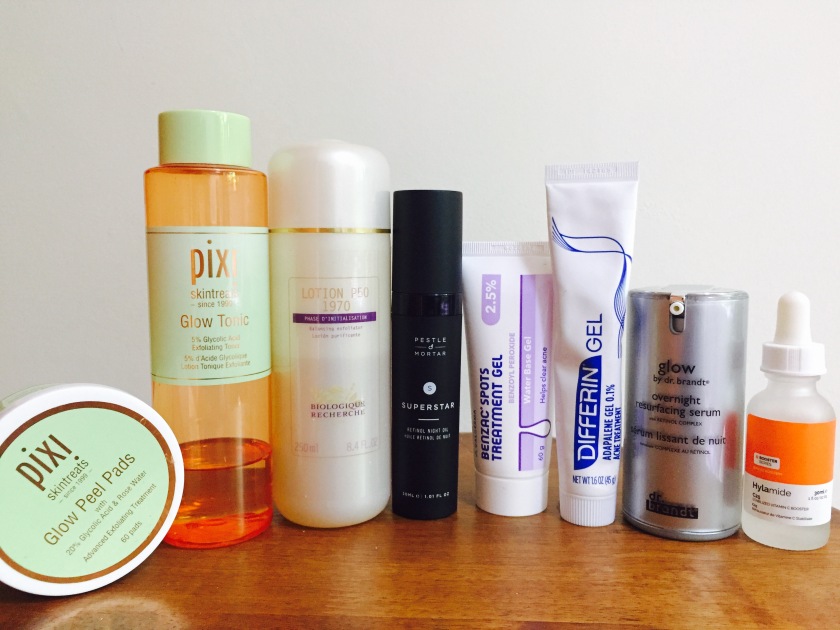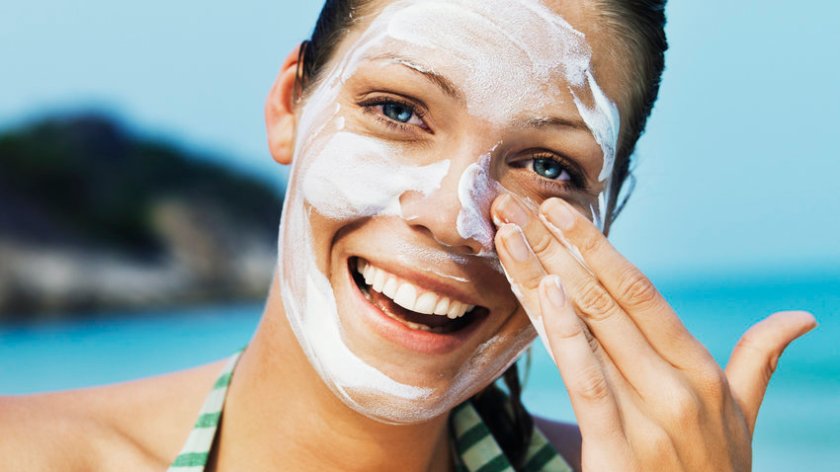
In my previous post whereby I talked about how to introduce actives to your skincare routine, I promised that I’ll give you a step by step guide on what to do. As I’ve already mentioned before (and also kept repeating) in my previous post, it’s best to take it slow when you want to add any actives to your skincare routine and give each active around 4 weeks to gauge how it’s working for your skin first before you add another different active.
Below I’ve separated the different actives that I commonly use into daytime and night time routines. Please note that the actives step is always after the cleansing step no matter day or night. After the actives step, you can add in all the hydrating lotions/ serums/ creams that you desire.
Daytime Routine

In the daytime, I like to incorporate a strong anti-oxidant (such as a Vitamin C serum) to shield the skin from the stresses of pollution as well as evening out my skin tone. Vitamin C also provides visible anti-ageing benefits such as the improvement of lines and wrinkles, loss of firmness, and a brighter complexion. Most importantly, there have been some studies showing that if you use a Vitamin C serum underneath your sunscreen, you’ll increase the stability of your sunscreen in the presence of sunlight.
However, because generally Vitamin C works best if your skin’s pH is low (around 3.5), you can use a pH-adjusting toner to immediately lower down your skin’s pH after cleansing to maximise the effects of the serum. Then you’ll apply your Vitamin C serum and wait for around 10 ~ 15 minutes before you continue with your BHA and AHA steps. I would advise that you apply BHA first before you apply AHA because BHA is better able to go deep into your pores and dissolve all those oily gunk. Then you’ll use an AHA to not only remove the gunk from your pores that the BHA had dissolved, you’ll also be able to do surface exfoliation. In short, BHA is used to deal with blackheads, oily pimples etc. while AHA is used to deal with closed comedones, whiteheads and milia.
After you’ve completed applying all your actives, you can continue to apply your other hydrating toners, serums, creams and most importantly, sunscreen.
So my daytime routine will be in this sequence:
Cleanse => pH Adjusting Toner => Vitamin C Serum => Wait 10 ~ 15 minutes => BHA => AHA => Wait 10 minutes => Hydrating Toner/ Mist => Hydrating Serum => 2 drops of Face Oil mixed with Day Cream => Sunscreen
Nighttime Routine

At night, I like to use either my over-the-counter (OTC) retinol products or my prescriptive retinoids. Again, after double cleansing to remove my makeup and sunscreen, I’ll go in with my BHA, AHA and then wait 10 minutes. If I want to buffer my retinoids, I’ll apply my hydrating toner and serum first and wait additional 20 minutes before I apply my retinoids. Otherwise, if I’m just using OTC retinol products, I’ll go in straight after my AHA step without the hydrating serum buffer (after waiting 10 minutes of course). Finally, I can then add in my other lotions, serums, creams and oils.
So my nighttime routine will be in this sequence:
Double Cleansing => BHA => AHA => Wait 10 minutes => OTC Retinol => Wait 30 minutes => Hydrating Toner/ Mist => Hydrating Serum => Face Oil => Night cream
Note: If I’m using a retinol oil such as the Pestle & Mortar Superstar Retinol Night Oil, the OTC Retinol step will be in the face oil step. So I’ll just wait 10 minutes after my AHA step before starting on my hydrating toners/ mists and continuing with the rest.
Below is my sequence when I use prescriptive retinoids:
Double Cleansing => BHA => AHA => Wait 10 minutes => Hydrating Toner => Hydrating Serum Buffer => Wait 20 minutes => Prescriptive Retinol => Wait 30 minutes => Face Oil => Night Cream
Lastly…
I hope that this step by step guide has been useful to you. Just remember that everybody’s skin is different and you definitely do not need to use all the actives that I’m using. Also, you’ll notice that I’ve incorporated some waiting time in between the steps because for me, the actives work better that way. However, I think that perhaps you might not need to have so much waiting in between the steps. You can experiment to find the most effective and efficient way you can incorporate them into your daily life.
Additionally, please always be in tune with your skin and observe it carefully when adding any new products.
As always, thank you for reading!




